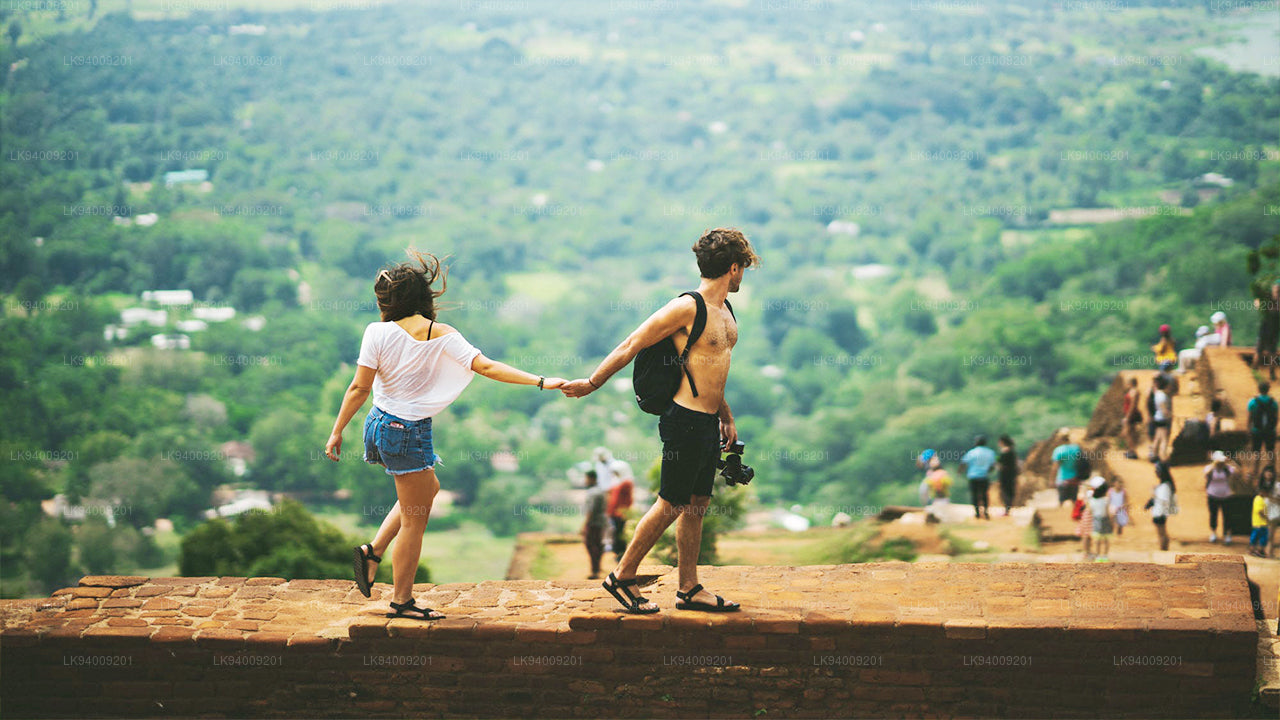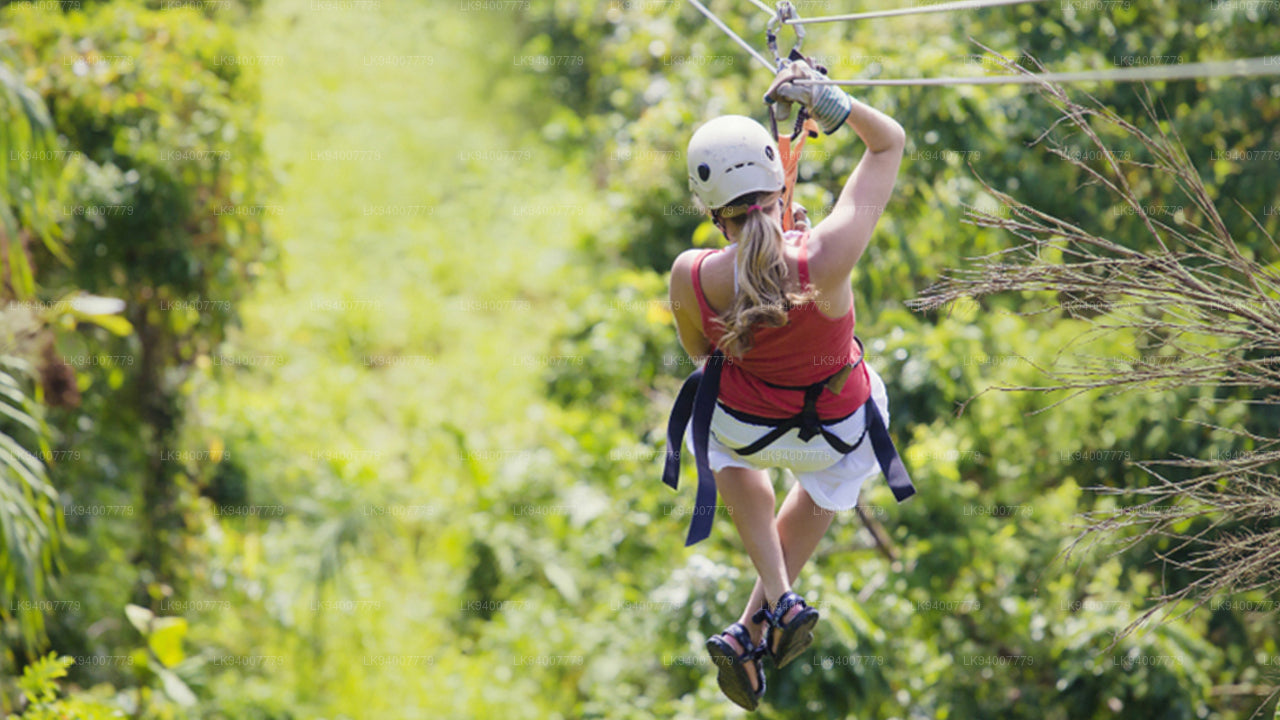
Beira Lake ෴ බේරේ වැව
Beira Lake is one of Colombo’s most famous landmarks. It lies right in the middle of the capital and is one of the few places of relaxation and beauty within the city limits. As such the area on and around it has many attractions; not to mention the history of the lake itself.
Beira Lake started out as a much bigger lake occupying an area of 410 acres over a century ago. But with the rapid commercialization of the area, it has since been reduced to approximately 160 acres.
HistoryBeira was created by the invading Portuguese in the 1500s, in order to serve as a moat that protected their base in Colombo from the hostile locals. They added many hidden dangers within the lake, such as large crocodiles and etc.
Beira proved to be a huge roadblock to local sovereigns such as Mayadunne of Sitawaka when they attempted to free the region from foreign rule. It was Mayadunne’s son, Rajasingha I, who succeeded in draining the lake in 1587, hence coming close to recovering the area from the Portuguese. He cut off the canals that fed the lake but were unable to deal with the additional reinforcements that the Portuguese brought in from India.After the Dutch laid siege and captured the lake; it was expanded and several islands were formed on it artificially. Some of them, such as Slave Island, were large enough to have a village and/or coconut plantations. People started inhabiting the islands and traffic over the water increased. However, it mostly used for political prisoners, as was the case in Slave Island, or agriculture; mainly due to the crocodiles that still infested the lake.
After the British took control they removed the crocodiles and developed the area surrounding the lake. The now grassy banks became popular for parties and even hosted a grand ball that was held in celebration of Britain’s victory in the battle of Waterloo. Beira lake became famous for a number of recreational activities, such as rowing and yachting. Slave Island was cleared of its prison fixings; and Ceylon’s first botanical garden, the Kew Gardens, was opened there in 1810. The seedlings were provided by the Royal Botanic Gardens in London. By the 19th-century land reclamation for development began and the land area of the lake was reduced, pollution also began to increase.
The Growth of BeiraAbout a decade ago the situation worsened to the extent that it was mostly surrounded by slums; while the water in the lake was purely wastewater from these huts and houses, that didn’t have the funds to deal with proper waste management. The place stank and only the poorest people lived in the area. The waterfront was lined with many large warehouses, reminiscent of Colombo’s tea trade; where tea was transported on barges via the port access canal. These warehouses stood around like a ghost town; blackened with the dirt of over a century; the gaping mouths of broken windows giving the haunted air. The only reason people went to the Beira lake region was to worship at the Gangarama Temple or to visit one of the locations important; such as the Colombo Rowing Club, SLECC, St Joseph’s College, or Lake House. These places had been created in the heyday of Beira Lake and were way too established there to be moved. The soul of Beira was on the verge of dying.
Then the government decided to redevelop the entire region. The slums were removed and the people moved to various government housing schemes; the lake was cleaned; good roads were laid out; skyscrapers and high-end businesses started popping all over. The Rowing Club started growing once more as more people developed an interest in water activities. The area became an affluent commercial zone.
That was just the beginning. Long term projects were put into place to redevelop the islands as well. It is currently ongoing. The character of the entire neighborhood will be changed dramatically by 2020. Slave Island is destined to become the entertainment and leisure center of Colombo. Even more spectacular skyscrapers, parks, resort hotels with shopping complexes, conference halls, convention centers, and high-end residences are all slated to come in the near future. The government policy is aimed at promoting conference tourism, where both business travelers and holiday goers can enjoy themselves.
AttractionsThis is an extension of the Gangarama Buddhist Temple. The place is raised on stilts from the lake floor and is only accessible by way of a long wooden boardwalk.
No reason for the odd name has been mentioned in any records. However, it can be conjectured that it may have its base in the word ‘Seemai Malikai’ in the Tamil language. As mentioned above, the British used this place for entertainment and for the tea trade when they ruled Ceylon. At the time, they brought South Indian workers to work in their tea factories. These people were usually Tamil speakers and some settled near the Beira Lake area where some of the wholesale tea trade was conducted; hence, the reason for the word’s origins. In Tamil, Seemai is a colloquial word for ‘British’, while Malikai means ‘palace’. So it’s possible that there was a British owned mansion or palace in the location of the current Seema Malakaya; which may have been donated to the Gangarama Temple during the late 19th century. It is a recorded fact that the previous temple sank into the waters in 1970. This temple may or may not have been such a palace as not much is known about its origins.
The current temple is a group of wooden pavilions that form an architectural masterpiece created by the famous architect, the late Sir Geoffrey Bawa. Created with a fusion of historic and modern Buddhist elements, it has its signature style evident. The place is picturesque, unique, and interesting.
Lovers’ Island
This island exactly what it sounds like. A haven for romantic couples who want some intimate time out in the open. PDA (public displays of affection) is highly frowned upon by traditional Sri Lankans, though it’s slowly becoming more common these days. A simple kiss on the mouth can have the locals show extreme disgust.
Therefore this island has been beautified by the government so that couples can express themselves in freedom. Reached by a very pretty suspension bridge; the island is filled with shady avenues, flowery hedges, and benches or stone seats with romantic views. It’s a nice place to visit, but it's best visited with your partner. Also, note that the city map mentions it as a ‘Children’s Park’; but you definitely don’t want to take your kids there for the sake of their poor innocent eyes.
8˚ on the Lake
Eight Degrees on the Lake is part of the Cinnamon Lakeside Hotel in Colombo, and Sri Lanka’s first floating restaurant. Built on a large tug; this restaurant is all polished wood, glass, and open spaces. Full of grandeur, this 100-person venue gives its patrons the opportunity to have a meal surrounded by the water of the lake, the fresh air, and the occasional water bird. The restaurant plays host to all sorts of fine events; such as unconventional weddings, business luncheons, and intimate cocktail evenings. With an open show-kitchen with action stations, two entire floors, elegant white interiors, and a translucent curved roof this is the hotel’s most remarkable venue.
Swan Boat Rides
You can hire a swan-shaped paddleboat for half an hour, at a rate of just Rs 100. These boats are two-seaters; and while a third person can sit on the back end with a bit of care, it’s not recommended. Since these are very steady and manually powered; they don’t really require a life vest. But there are some vests for the safety-conscious. To go out onto the lake you need to paddle these pedals like a bicycle. To tell the truth it’s quite difficult doing it at a stretch, as the pedals need quite a lot of force to turn. But with two people doing it and a reasonable amount of leg muscle involved; it can be a wonderfully relaxing and yet inexpensive trip over the lake. You will also get to see some fauna in and around the lake such as storks, pelicans, swans, ducks, monitor lizards, and various species of fish. So all in all not too bad at all.
Jogging Track
The smooth sidewalks and leafy avenues are used as jogging tracks by locals and visitors. It is also good for a walk or to ride a bicycle for some exercise. So if you need to get off the stressful runaway wagon that is your holiday or business schedule, and take a break away from all of it while still being in Colombo City; this is the place you need to go to. But keep in mind that there will be crows dive-bombing you with bird poop, the city skyline acting as a backdrop (which while being a nice view, may not be preferred by some), and an occasional stink rising if the day is dry and hot. This is due to the former pollution of the lake; which, though it has been cleaned, still smells occasionally due to the lakebed being corrupted. They are in the process of finding a solution for the smell.







